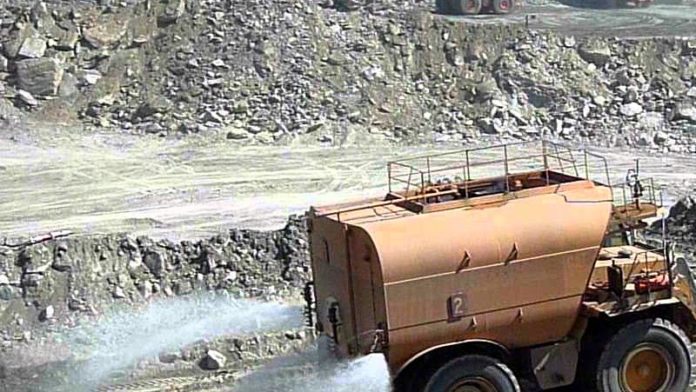
BARRICK Gold had submitted proposals aimed at reaching a compromise deal regarding new taxes from the Lumwama copper mine in Zambia, but it warned that if the current tax regime was retained all options would be considered, including selling the mine.
The company said in an announcement today that it was continuing to negotiate with the Zambian government for a “… mutually-beneficial way forward for the operation”. It added it was “mindful” the government wanted to increase revenue. “At the same time, however, its proposed tax changes would put Lumwana in a challenging situation,” it said.
“The proposed changes to taxes and royalties would imperil the mine’s ability to sustain returns to all stakeholders, such as the significant contribution of more than $3.3bn it has already made to the Zambian economy over the past 10 years,” said Willem Jacobs, COO for Barrick’s Africa and the Middle East operations.
Jacobs described media reports that Barrick intended to sell Lumwana as “untrue”, but he added that “… given the challenging conditions the mine was facing, all options would have to be considered”.
Pressure is increasing on Zambia’s government to relent on new taxes it introduced this year in which it increased the mineral royalty rates by 1.5%. It also introduced a fourth tier rate at 10% when the copper price exceeds $7,500 per tonne, and made royalties on minerals non-deductible for tax purposes.
On December 21, First Quantum Minerals said it would retrench 2,500 staff at its Zambian facilities in the first quarter whilst Vedanta shut the Nchanga smelter at its Konkola Copper Mines (KCM) after the introduction of an import duty on copper concentrates.
Zambia’s Chamber of Mines said on December 20 that the effective tax rate Zambian miners would be paying would range between 86% and 105% putting 27,900 jobs at risk. More than half of the country’s copper mines would be unprofitable next year, it said.
Copper output will be flat next year and will start declining from 2020 as a result of the tax increases, Sokwani Chilembo, CEO at the Chamber of Mines, told Bloomberg News. The industry group has forecast production of 820,000 metric tons for this year, he said. Copper accounts for more than 70% of Zambia’s foreign-exchange earnings, the newswire said.
Said Jacobs: “Lumwana has made detailed proposals to the government about a partnership approach which would provide the state with an improved share in the economics of Lumwana without overburdening the mine”.
“Finding a win-win solution between the industry and government would without doubt increase investor confidence in Zambia and safeguard the long-term prospects of its mining industry,” he added.
KANSANSHI
Sales of copper from First Quantum’s Kansanshi mine in Zambia dropped 25% in the last quarter of 2018, compared with the same period of 2017, according to preliminary figures from the company earlier this month.
It reported the sale of 56,330 tonnes of copper from the mine in Solwezi for the quarter, compared with 74,974 tonnes in the last quarter of 2017. The figure also declined against the third quarter of 2018, when 64,848 tonnes were sold.
The preliminary figures show an overall drop in copper sales at the mine for 2018 of 14 percent, to 229,832 tonnes, from 267,700 tonnes in 2017.
Kansanshi’s copper production also declined for the quarter, to 61,780 tonnes in the fourth quarter of 2018 from 64,800 tonnes in the fourth quarter of 2017 and 63,687 tonnes in the third quarter of 2018. It produced 251,522 during the full 2018 year.
The mine’s gold production fell by 8% to 33,465 ounces in the last three months of 2018, compared with 36,363 ounces in the corresponding period of 2017. Annually output was down by 7.5% or 10,576 ounces to 130,019 ounces.









